In the ISA, we meticulously monitor the evolution of our cherished sport. Since the beginning of the growth of our activity around 2009 we have diligently documented accidents and near misses, presenting our findings through annual presentations and reports.
For a glimpse into the unpredictable sides of our sport and in the attempt to give practitioners the opportunity to learn from the mistakes of others, we here provide the summary of the data we collect. Also check out our FailFriday segment on social media, featuring selected incidents, aiming for a safer and more informed community.
Last Updated: Jan. 2024
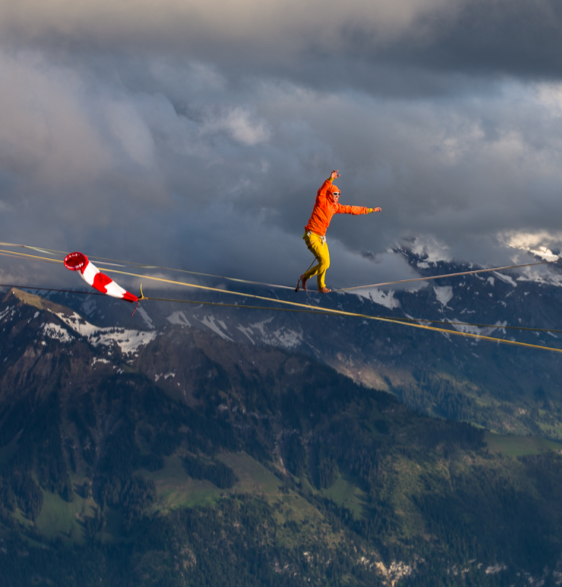
Risk Calculations by Slackline Variation
Just like any sport, our activity carries inherent risks, with a few unfortunate cases resulting in fatalities. Since the 1970s, the slackline variations have diversified, which prompts us to categorize them based on associated risks.
The following table gives an overview on the risk of death while slacklining:
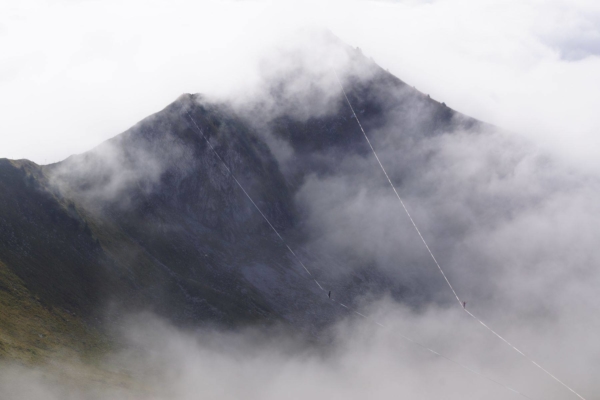
| Slackline Variation | Total Deaths | Timeframe in Years | Deaths per Year | Estimated Population* | Annual Risk of Death per 1000 People at Risk |
|---|---|---|---|---|---|
| Highline | 9 | 15 | 0.6 | 10’000 | 0.06 |
| Trickline | 3 | 15 | 0.2 | 10’000 | 0.02 |
| Longline | 1 | 15 | 0.06 | 20’000 | 0.003 |
| Waterline | 1 | 15 | 0.06 | 5’000 | 0.012 |
| Starter Kit | 1 | 15 | 0.06 | 1’000’000 | 0.00006 |
How does this work?
Such death rates are calculated as the number of deaths in a given period (one year) divided by the average population number exposed to risk of death in that period (e.g. all highliners). This allows to calculate a death rate without knowing who highlines how often, and allows comparing the risk of dying while highlining to other sports activities, since this is a common approach of calculating risk.
For comparison we provide you with a list of death rates from other sports:
- Mountain Biking: 0.0035 [Source]
- Skydiving 0.009 [Source]
- Watersports (Drowning) 0.013 [Source]
- Mountain hiking: 0.02 [Source]
- Mountaineering (Mountain, Rock and Ice climbing): 0.068 [Source]
- Paragliding: 0.46 [Source]
- Base Jumping 4.3 [Source]
- Mount Everest accent: 15.6 [Source]
* How are the population numbers estimated?
The slackline populations are hard to estimate. They are currently estimated by the ISA by adding up slackliners from individual countries, mostly collected by interviewing community leaders and comparing to our demographic surveys. Further we know the ISA registered slackliners (approx. 3000), from which approx 600 have also registered as athletes. Further from the social media page sizes (Slackchat, etc) and estimated sales of kits around the world from talking to manufacturers. The populations further are averaged over the timescale of 15 years since the sport steadily grew during this period. For tricklining specifically we chose to estimate individuals who rig their starter kits for the major purpose of performing tricks (two out of three deaths in tricklining occurred with such setups), we therefore statistically are not talking about competitive trickline setups, hence the population for tricklining in our calculation could seem rather high. Even if these slackline population numbers are off by a factor 2-3, the final numbers don’t change significantly.
Self-inflicted or third party involvement?
All known deaths in highlining and waterlining were primarily self-inflicted. There have been no known highline deaths of uninvolved third parties.
Two out of three people killed in tricklining were uninvolved bystanders and the sole longline death was a slacklining person, but not on the line at the time of the accident. The child killed due to a starter kit was a user, but did not install the slackline to the fatal tree himself.
Comparison of annual risk of death (per 1000 people at risk)
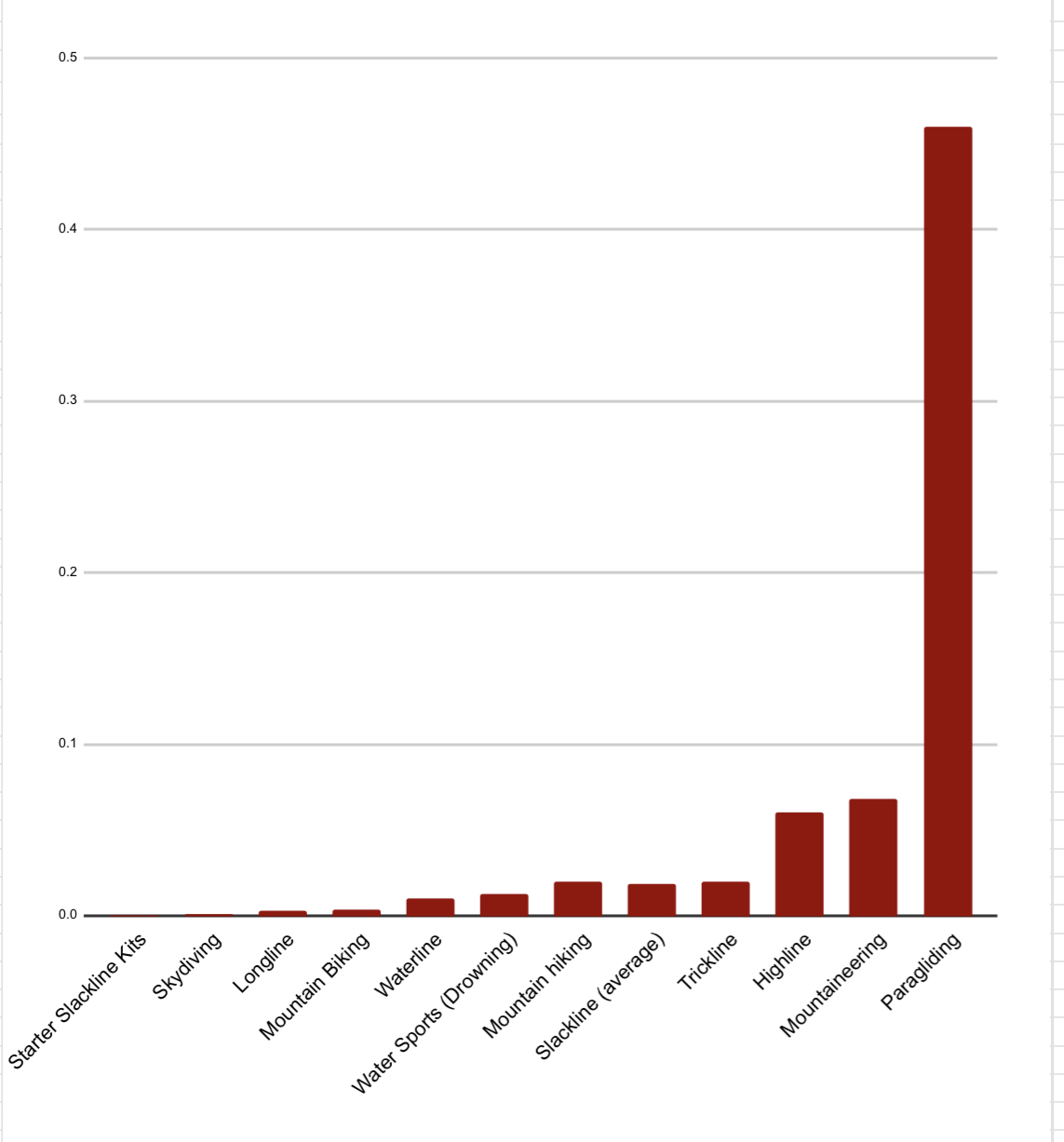
Reasons why the highline death rate is not higher:
Here some reasons we know have saved lives in the past:
- Highline systems are overdimensioned (usually with safety factor 4-10 on the material)
- Highline systems are redundant
- Highline systems are monitored, in minimum with four-eyes principle
- Highliners are therefore in most cases not practicing their sport alone
- Exposure to height makes one overcautious
- The forces in highline systems are known and relatively low
- More and more Highline material is independently tested and standardized and education on safe highline practices are spread widely on the internet
Highline Deaths
The following 9 highline deaths are recorded in our database. They occured since the sport started in 1983.
| Number | Year | Country | Reason | Details |
|---|---|---|---|---|
| 1 | 2011 | Slovenia | use of wrong materials (carabiner instead of closed ring on leash rope) | Link |
| 2 | 2018 | Italy | leash not tied to the harness | Link |
| 3 | 2018 | Brazil | got caught in a heavy storm on a highline, due to tapes ripping | Link |
| 4 | 2019 | Brazil | anchor failure (insufficiently dimensioned concrete slab) | Link |
| 5 | 2020 | Brazil | leash not tied to the harness | Link |
| 6 | 2021 | Columbia | leash not tied to the harness | Link |
| 7 | 2022 | Iran | leash not tied to the harness | Link |
| 8 | 2023 | Greece | leash not tied to the harness | Link |
| 9 | 2023 | Colombia | fall during rigging, attached to rope that failed in progress capture device | Link |
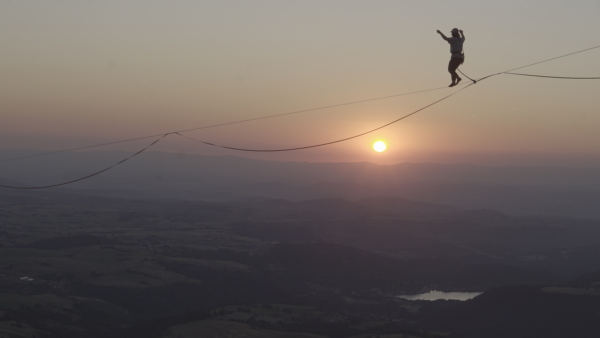
This count does not include 5 known deaths (see below), which occurred during scouting, approach/access to highlines or due to standing and/tripping near a highline anchor. Also excluded is one death due to a rope swing, which was anchored to a highline. The person did not jump far enough and hit the cliff.
These deaths are not considered highline deaths, they fall into the risks associated to mountain hiking, mountaineering and rope-swinging and associated risk statistics of these activities.
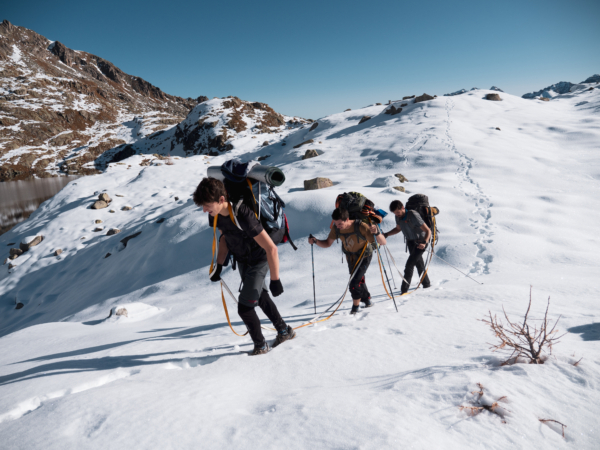
| Number | Year | Country | Reason | Details |
|---|---|---|---|---|
| 1 | 2015 | Switzerland | Accessing or retreating from an exposed highline anchor | Not available |
| 2 | 2015 | China | Accessing or retreating from an exposed highline anchor | Not available |
| 3 | 2019 | United States | A Highliner died succumbing to the injuries she sustained from a fall near a highline anchor | Not available |
| 4 | 2020 | France | A Highliner died succumbing to the injuries he sustained from a fall near a highline anchor | Link |
| 5 | 2022 | Italy | A highliner died hitting the cliff during a ropeswing anchored to a highline. | Link |
Trickline Deaths
The following 3 trickline deaths are recorded in our database. They occured since the sport started in 2006.
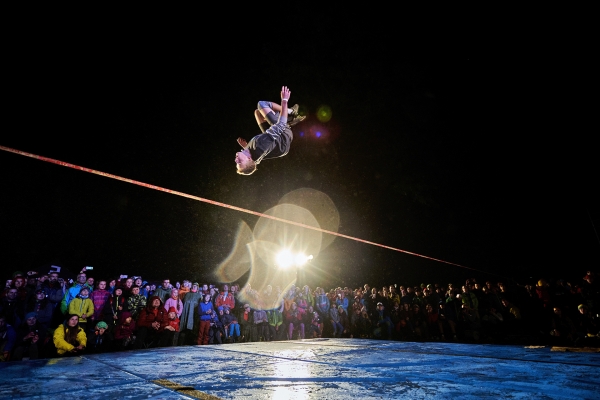
| Number | Year | Country | Reason | Details |
|---|---|---|---|---|
| 1 | 2013 | United States | Collision with line: A cyclist was killed when he rode his bike into a trickline | Link |
| 2 | 2014 | Brazil | Anchor failure: Anchor girth hitch failed and a ratchet struck the individual in the face while tensioning | Link |
| 3 | 2014 | Brazil | Anchor Failure: A bystander was killed when a light post was used as an anchor and pulled over by the tension of a trickline | Link |
Longline Deaths
The following longline death is recorded in our database. They occured since the sport started in approx. 1980.
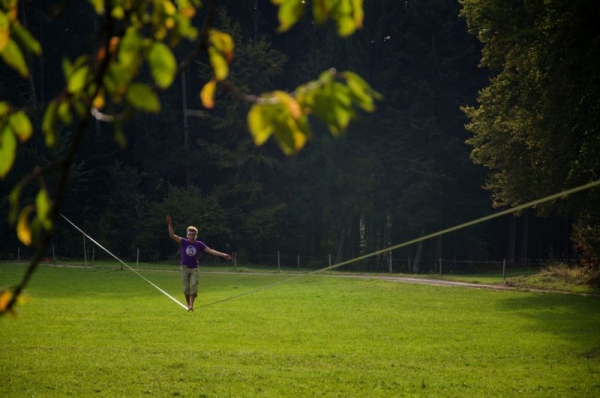
| Number | Year | Country | Reason | Details |
|---|---|---|---|---|
| 1 | 2020 | Russia | Longline Anchor Failure due to use of underdimensioned gear | Link |
Waterline Deaths
The following waterline death is recorded in our database. Strictly speaking this has to be classified as a death from drowning and not slacklining.
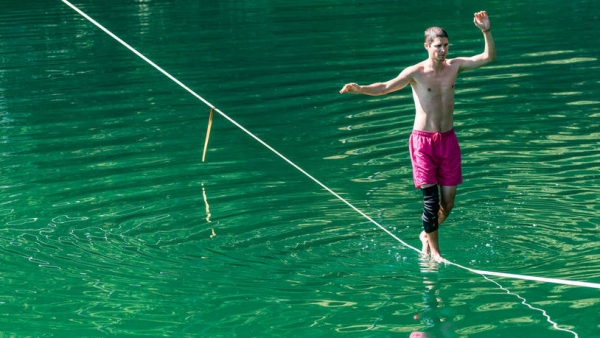
| Number | Year | Country | Reason | Details |
|---|---|---|---|---|
| 1 | 2014 | United States | Ocean current: A Waterliner died waterlining when pulled out to sea at high tide. | not available |
Starter Kit Deaths
The following starter kit death is recorded in our database. Strictly speaking this was not a slackliner balancing, but a user of a so called “ninja-set” built from a slackline.
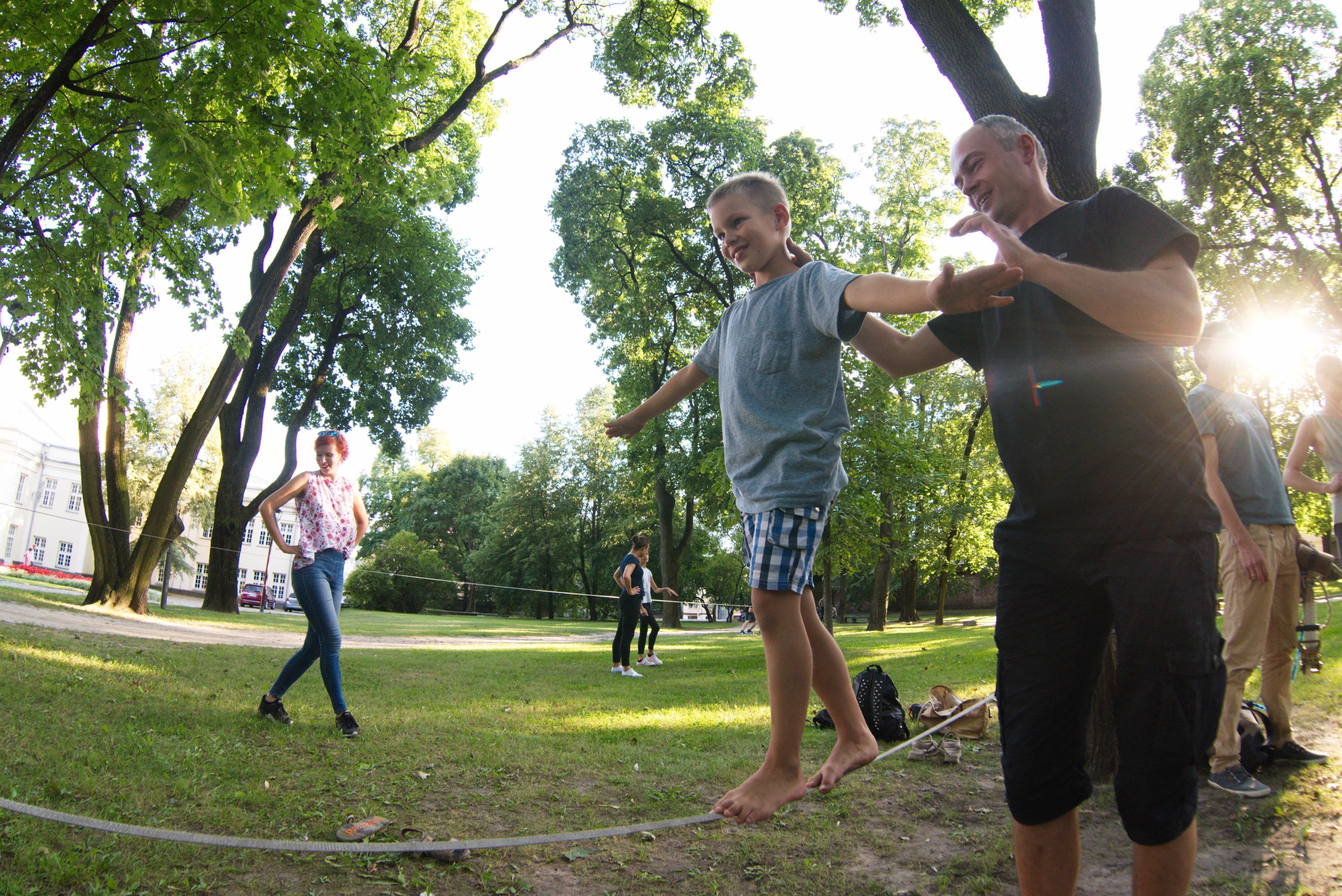
| Number | Year | Country | Reason | Details |
|---|---|---|---|---|
| 1 | 2014 | United States | Use of dead/rotten tree: A 4 year old Boy died from getting struck by a dead tree when it fell while he was playing with a obstacle course slackline | Link |
Important Links:
We provide event, festival and contest organisers with checklists and concepts for risk assessements as a basis for permits and insurance policies.
Let us know if we can help you with your slackline event!
– Register your Event and Contests
– Documents for Event Organizers
– Report Incident or Accident
– Fail Friday segments
– Safety reports, Warnings and Advisories


